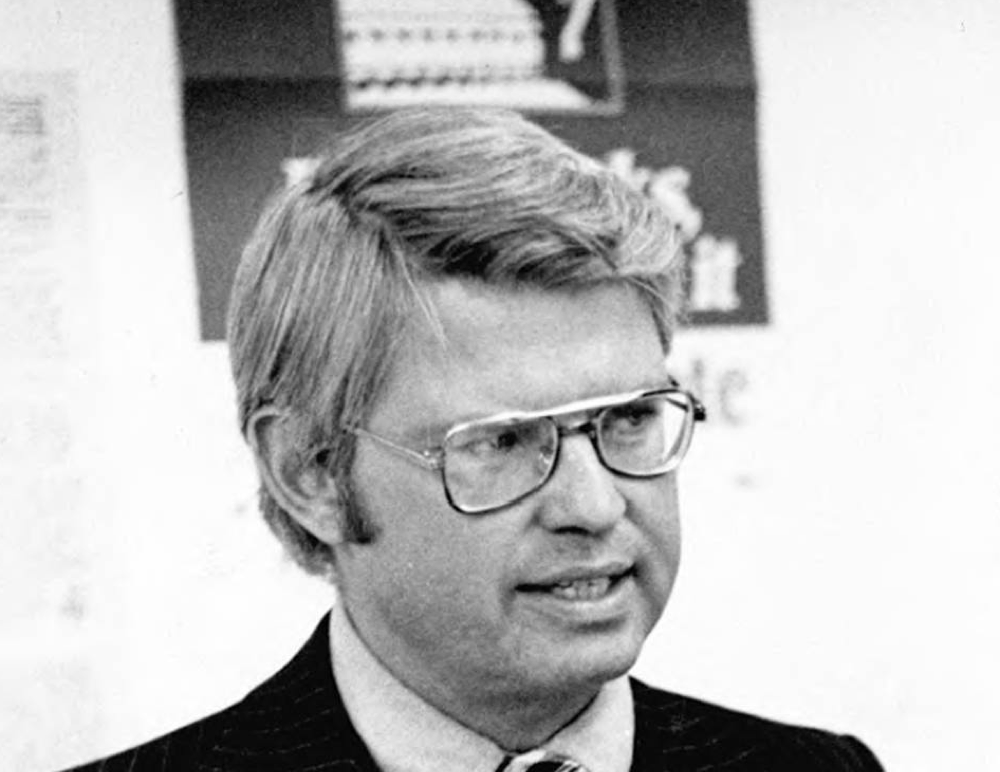A lot of people told Dick Lamm he was committing political suicide when, as a freshman legislator in the Colorado House, he introduced a bill that would allow for abortion in certain limited circumstances, provided a three-doctor hospital board signed off on the procedure. He ended up with some 60 co-sponsors, and on April 25, 1967, Gov. John Love signed it into law.
It was the first law in the country liberalizing abortion regulations, six years before the United States Supreme Court found in the Roe v. Wade decision that women have a constitutional right to have an abortion, and it formed a model for other states as different as California and North Carolina to begin to liberalize their abortion laws.
The vote was not particularly close -- 40-21 in the House, 20-13 in the Senate -- and it was bipartisan, with religion having a lot more to do with how legislators came down on the issue than party affiliation.

But it was incredibly contentious. John Bermingham, a Republican who co-sponsored the legislation in the Senate, recalls one opponent slamming a jar containing a preserved fetus on the table "right under my nose, so to speak" during a committee hearing. He had to move the hearings from the committee room to the full Senate chamber because so many people wanted to a participate. He also had to take pains to introduce the legislation when the leader of the Senate, who was Catholic, wasn't in the building so that it wouldn't be assigned to a "kill" committee.
Lamm, a Democrat who would go on to be governor of Colorado, said he decided to introduce the legislation after spending time in Peru in the early 60s with his wife, Dottie Lamm. In one district, 25 percent of the hospital beds were taken by women suffering injuries from illegal abortion, and the Catholic priests of the region were handing out contraceptives in violation of church doctrine because of the terrible consequences of unwanted pregnancy.
Women in the United States also suffered from illegal abortion.
In a 1947 expose on illegal abortion, the Rocky Mountain News said that some 700 women were admitted to Denver General Hospital over a five-year period due to complications from abortion, and many of them died. They were mostly not "delinquent girls," as one might assume, the author wrote, but wives with children who did not think they could care for any more.
But Lamm said he wasn't really aware of the issue before he went to Peru. "Abortion was hardly a word you could say aloud," he said.
"Dottie probably encouraged Dick to introduce it," Bermingham said.
But for years after the legislation passed, Lamm said, "I would have these white-glove, society ladies coming up to me and thanking me and telling me, very frankly, that they had had illegal abortions."
Lamm went to great lengths to make a respectable case for abortion.
"There was none of this 'It's my body,'" he said. "I don't know if I would have even agreed with that at the time, and if I did, I certainly wouldn't have said it."
The people who testified in the legislature were doctors and ministers, and the argument in favor of liberalizing the law was mostly about public health.
"I purposely did not put on any Unitarians," he said. "That would have been predictable. We had these establishment Lutheran ministers."
Did any women testify? Lamm searched his memory in response to this question and called out to his wife.
"Dottie! Did we have any women testify?"
After some back and forth, they concluded that yes, there was one woman who spoke about her experience with illegal abortion.
There was a woman who played a major role in pushing the legislation, Ruth Steel, an Englewood housewife with two children, who lobbied tirelessly behind the scenes.
In a Denver Post article analyzing the legislative feat, Steel said she was inspired by her work in Denver General Hospital and in Denver's children's homes, where she saw neglected children whose parents could not or would not care for them.
"Women with means were urging decriminalization because they knew the difference between safe abortion and complications was money," said Karen Middleton, executive director of NARAL Pro-Choice Colorado.
The law was very restrictive by today's standards.
It allowed for abortion in cases where the woman's mental or physical health was at stake and in cases of rape and incest up to 16 weeks. Women had to make their case to a three-doctor panel at a hospital, which would decide if their case met the criteria.
In the first year the law was in effect, there were 262 legal abortions in Colorado. Of those, 142 were for the mental health of the mother, two were for suicide risk, 28 were for rape, 14 were for women who contracted rubella while pregnant, a condition that can lead to serious birth defects, and the rest were simply marked "therapeutic" with no further explanation.
Speaking to the diversity of circumstances in which women end pregnancies, the women and girls who had abortions ranged in age from 12 to 48.
Time magazine visited Colorado in 1968 to see how the law was working out and what lessons could be learned. A major problem the magazine noted was that there were so few legal abortions that illegal abortion remained widespread. Abortions were hard to obtain, and the cost could be as high as $2,000. Even women of means still went to Mexico or Puerto Rico for illegal abortions at a fraction of the cost.
The speed with which the women's movement and other social changes were sweeping the country was apparent in newspaper coverage from the time.
In the 1962, a statehouse reporter for the Rocky Mountain News noted that Colorado's abortion laws went back to territorial times and that there was no exception for women who contracted rubella in pregnancy, a major concern in the days before vaccination.
“Gov. McNichols was asked if he thought Colorado law should be revised to allow legal abortion when, as in the case of Mrs. Sherri Finkbine, there is reason to believe the child may be born deformed," Lester Buck wrote. "His answer: 'No comment.' Several Colorado legislators, asked the same question, answered: 'You trying to get us killed in an election year? This is as touchy as birth control.'"
But by 1969, the same newspaper ran a three-part series called, "Abortion: A Dilemma of Society," that featured many people calling for more liberal laws. Why, they asked, should women have to justify themselves to a panel of doctors?
“This law is very rigid," said one minister who helped women obtain abortions. "I think the law is an abortion. It is repressive and totally defective as far as helping people who need abortions. The law’s extremely restrictive and anything but liberal.”
(He was a Unitarian, predictably.)
The article said there were roughly 10,000 legal abortions in the United States in 1969 and an estimated 3 million illegal ones.
Today, Colorado continues to have relatively liberal abortion laws. There is no public funding for abortion, and girls younger than 18 must tell their parents or seek a judge's permission to not tell.
However, there are not the waiting periods, the regulations on the width of hallways in clinics, the requirements that only doctors and not nurse-practitioners perform abortions and other rules that have limited abortion access in other parts of the country. Colorado voters have rejected "personhood" amendments that would give legal rights to fetuses three times. In Boulder, Dr. Warren Hern continues to operate one of the few clinics in the country that performs late-term abortions.
In 2007, on the 40th anniversary of Love signing the abortion bill into law, opponents of abortion gathered in the same chambers of the Colorado Supreme Court to mark "40 years in the wilderness." Bob Enyart, a pastor at Denver Bible Church and a fixture in Colorado's pro-life movement, described how the law's provisions to allow abortion in the cases of rape and incest marked a real erosion in the legal personhood of the fetus. How could it be acceptable to kill a child for a crime committed by its father?
In 1968, a year after the passage of the law, the Colorado Joint Council on Medical and Social Legislation distributed in pamphlet form a lengthy op-ed by attorney John Archibald that first ran in the Denver Post. Archibald took issue with Lamm's claim that the law was working well and had become a settled issue. It was time, Archibald said, to re-examine the law. He concluded his argument with words that will ring true to abortion opponents of any era, who continue to introduce legislation to restrict the practice.
“The Colorado abortion law in its present form has not been a step of progress, but one of retrogression," he wrote. "...The abortion issue will not be closed as long as human life, in whatever form and in whatever condition, is believed to be more than human tissue. The time to begin a searching and thorough re-examination of the Colorado abortion law is now."
For Lamm, the driving force behind the law's passage remains just as true. Abortion has always been with us, and will always be with us.
"The legislators saw that whatever they felt personally, there was a powerful force that led women to get abortions," he said. "The law could only say where and when abortions would occur, i.e. if they would be illegal or not."












